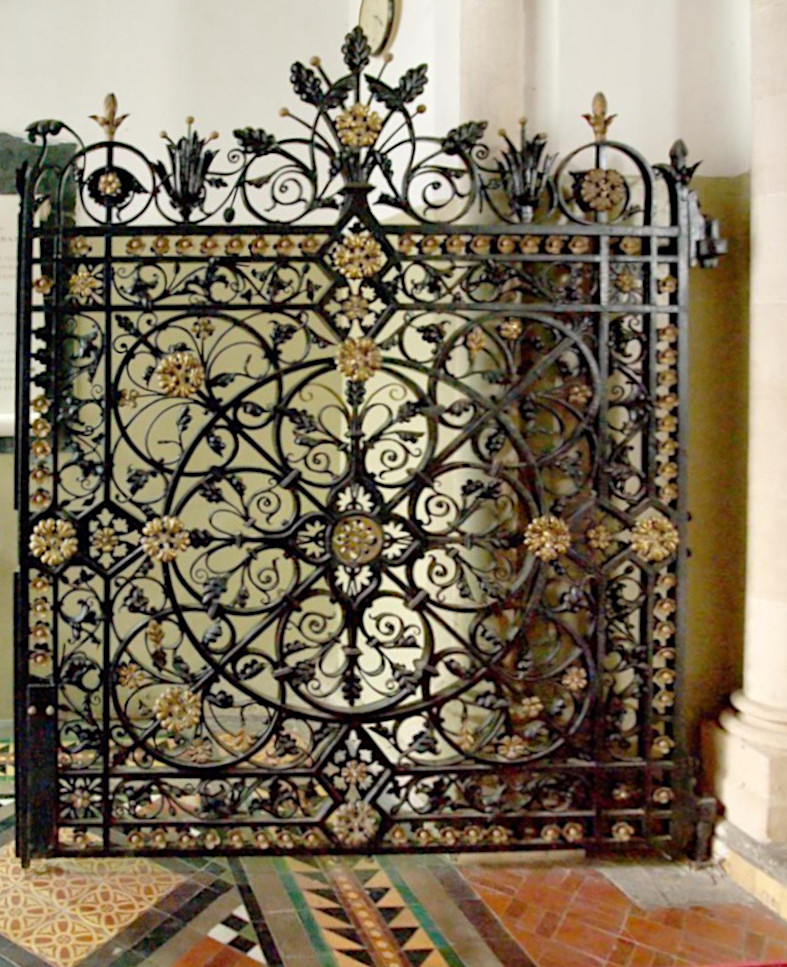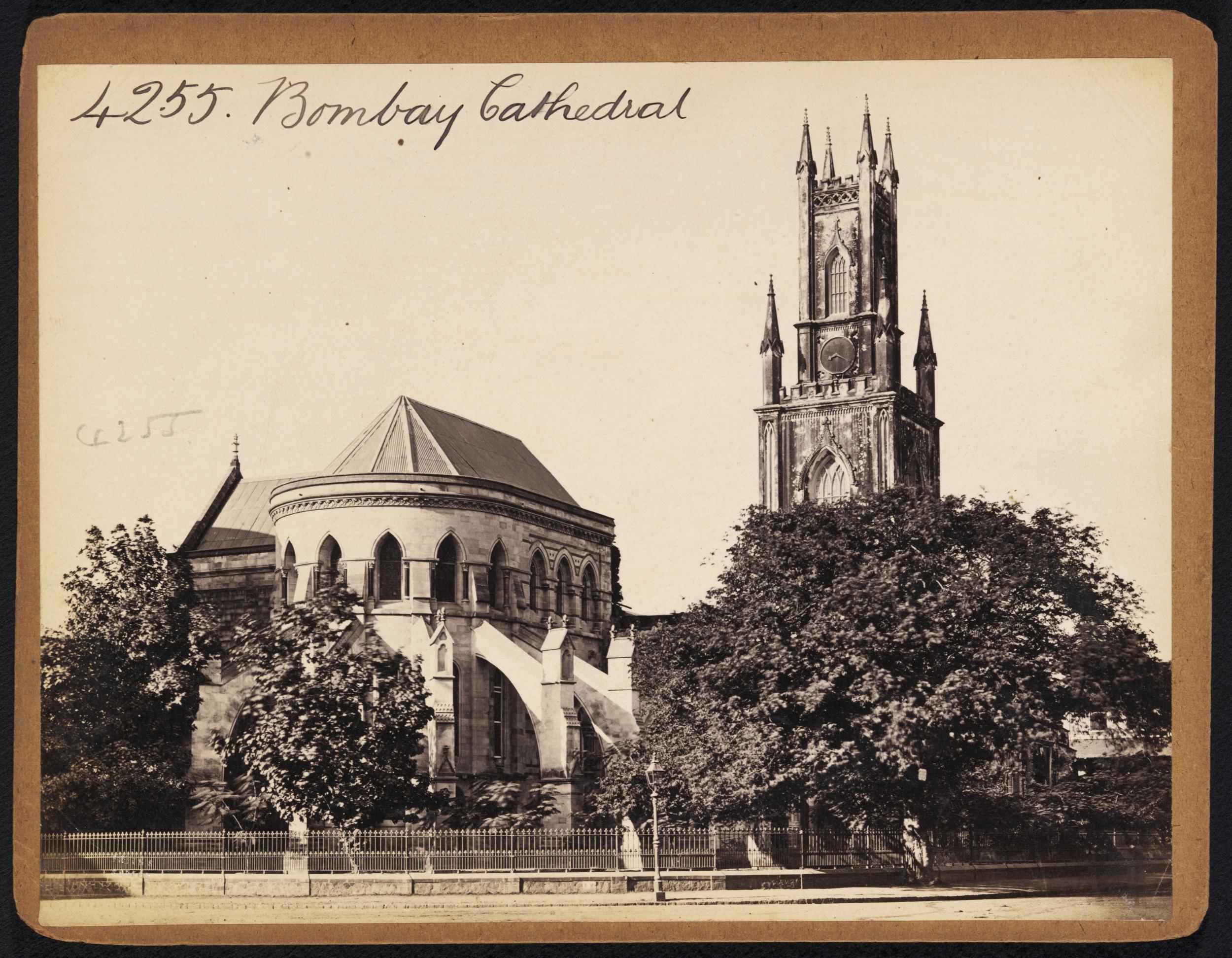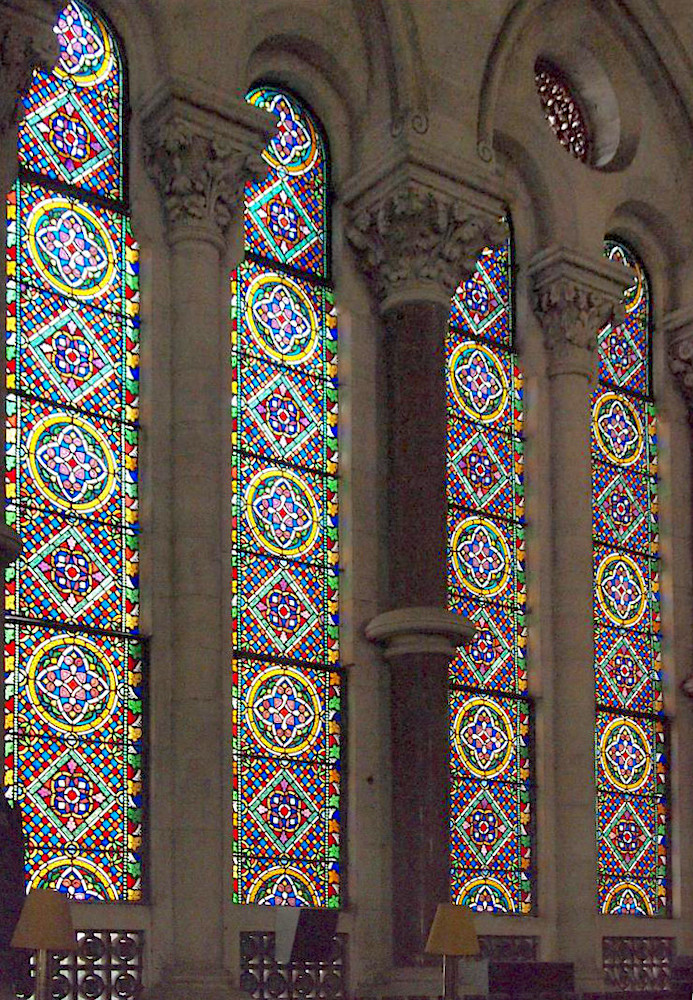Special thanks not only to Patrick Carson, who provided two of the sources as well as most of the photographs, but also to Rangan Datta, who got in touch earlier about the Cathedral, and photographed the "Zero Point" signboard outside it. The historical images were downloaded by Jacqueline Banerjee. [You may use the modern images without prior permission for any scholarly or educational purpose as long as you (1) credit the photographer and (2) link your document to this URL in a web project or cite it in a print one. Click on all the images to enlarge them.]
Cathedral Exterior


Left: Exterior of the Cathedral. Right: Coloured Lithograph of 1833, by Jose M. Gonsalves, Jose M. (fl. 1826-c.1842), courtesy of the British Library (Shelfmark: X840 (5), no. 8405).
St Thomas's Cathedral is the oldest British house of worship in India. A Grade I heritage building, it gives its name to the surrounding area (Churchgate) and stands at Mumbai's "zero point," that is, the point from which all distances to and from the city are measured. This information comes from the signboard outside the cathedral. (The equivalent spot in London is the monument at Charing Cross, first erected there in the late thirteenth century).

"Zero Point" signboard, photographed by Rangan Datta.
Few buildings in India put us more directly in touch with the East India Company's early years there. The first governor of Bombay (as it was known then), Sir John Oxinden, had been keen to attend to the religious needs of his men, and building work began under the next governor, Gerald Aungier: the first foundation stone was laid in 1676 (see the church's own website). After this work had stalled, another was laid in 1715, as a direct result of a powerful sermon by the Chaplain in Bombay, the Rev. Richard Cobbe. Funded by charitable donations, the church building was finally completed in December 1718, and inaugurated on Christmas Day that year. Edward Eastwick's nineteenth-century account of St Thomas's picks up the story, explaining that it "stands in the Fort, close to the Green," and having been built largely as a garrison church, was "made a cathedral on the establishment of the See of Bombay, in 1833, on which occasion the only change in the structure was the conversion of the low belfry into a high tower, which was done at the expense of the E.I.C." (123).
Cathedral Interior


Left: Looking up the nave towards the chancel. Right: A closer view of the chancel.
As Eastwick goes on to explain, "[T]he plan is simple; the columns approach the Tuscan, the roof is vaulted, and the whole building is of stone. The body of the church is roomy, but there is no gallery" (123). From the church website we also learn that the three arches of the vaulted roof are "supported by two pillars and pilasters on each side," and that the arrangement at the east, with the semi-dome of the apse, and the communion table reached by three steps, is similar to that of St Paul's in London; also that the church "was planned to hold a congregation of 1,000 people.”


Some of the outstanding metalwork in the cathedral. Left: One of the chancel gates. Right: The splendid brass lectern, standing on tiny stone lions — the eagle being a symbol of St John, and the lions of St Mark. Note the tessellated pavement, dedicated to Archdeacon Fletcher (1802-1867), who had "spearheaded" the restoration project of the 1860s (see "History," and Tahseen's newspaper account).

A "whole-plate albumen print" from the Francis Frith collection at the Victoria and Albert Museum, London, late 1860-70s (call mark, E.208:431-1994) showing the extension.
Like so many other churches, Bombay Cathedral was extended and restored during the Victorian period, most notably by having "the grand eastern wing" added during the 1860s ("History"). Grand it may be, but, unfortunately for purists, it is in Gothic Revival style, in contrast to the neo-classical style of the original. This was not down to sheer thoughtlessness, as Jan Morris suggests (29), but because James Trubshawe (architect of nearby Elphinstone College) had envisaged a total rebuild. The plan seems to have been fraught from the beginning, and, as so often, funds ran out. The Bombay Builder of 5 August 1865 foresaw the resultant mismatch: "Were it not now too late, we might enlarge upon the absurdity of attempting to convert the present Cathedral into a perfect Gothic structure" (2). While the church website maintains that the "multiple additions and alterations" made to the fabric have always "respected the integrity of the previous designs," architectural historians have thought otherwise, Philip Davies, for example, finding the "apsed chancel ... curiously incongruent" (164).
Be that as it may, the Cathedral is still impressive and still thriving. Its congregation is now best characterised as "protestant cross denominational," since in 1970 "the Anglican Church (Church of England) joined the Union of the Church of North India along with other Protestant Churches" ("History").
Memorials


Memorial to the Hon. Jonathan Duncan, Governor of Bombay from 1795-1811, with the inscription below. A Hindu mourns and hangs his head by the urn, on which the female figure of Justice writes, "He was a good man and a just."
St Thomas's also receives many visitors, drawn in particular by its wealth of impressive memorials to figures connected with East India Company history in this region. Ismat Tahseen picks out the remarkable one by the sculptor John Bacon the Younger, celebrating (in the words of the inscription) the "early fame and ... patriot valour" of Captain Hardinge, who died in a naval engagement off the coast; another, by Charles Peart, recalls the heroic young Lieutenant-Colonel John Campbell, who acquitted himself heroically in the Siege of Mangalore only to fall ill and die in Bombay. Such memorials, as Tahseen says, "give an immediate, anecdotal flavour of life and death in British Bombay." But perhaps the most touching is the one shown above, also by John Bacon the Younger, paid for by local people, to an administrator rather than an officer: the Hon. Jonathan Duncan, Governor of Bombay from 1795-1811. Despite having developed a warm respect for Indian culture, Duncan did his utmost to repress both slavery and infanticide. He was, apparently, exploited by less scrupulous administrators, but the words just written on the funeral urn seem fully deserved (see Nightingale, and Groseclose 118).

These five lancet windows were installed by the Royal Engineers in memory of fallen comrades. Stained glass windows, by important British designers like Henry Holiday (in the apse) and Charles Eamer Kempe, are among the glories of this Cathedral (for Kempe's work here, see Barlow 41, 44).
Other Monuments in the Cathedral
- Monument to Captain Hardinge
- Monument to Lt.-Col. John Campbell
- Monument to Lt.-Col. John Nugent
- Monument to the Crew of the Cleopatra (a steamship with Indian convicts bound for Singapore)
Bibliography
Barlow, Adrian. Kempe: The Life, Art and Legacy of Charles Eamer Kempe. Cambridge: Lutterworth, 2018. Web. 25 September 2020.
Carson, Patrick. Bombay: A City of Surprises. Privately printed, version 2, 2017. (This reprints the account by Ismat Tahseen).
Datta, Rangan. "St. Thomas’ Cathedral, Zero Point of Mumbai." Rangan Datta: Travel Writer and Photographer. Web. 25 September 2020.
Davies, Philip. Splendours of the Raj: British Architecture in India, 1660-1947. London: Penguin, 1987.
Eastwick, Edward R. Handbook of the Bombay Presidency, with an account of the City of Bombay. 2nd ed. London: John Murray, 1881. Internet Archive, from the Digital Library of India. Web. 25 September 2020.
Groseclose, Barbara. British Sculpture and the Company Raj: Church Monuments and Public Statuary in Madras, Calcutta, and Bombay to 1858. Newark: University of Delaware Press, 1995.
History. St Thomas's Cathedral Mumbai. Web. 25 September 2020.
"The Month." The Bombay Builder: An Illustrated Journal of Engineering Architecture Science & Art, Volume 1: 23-24. Google Books. Free EBook. Web. 25 November 2020.
Morris, Jan. Stones of Empire: The Buildings of the Raj. Oxford: Oxford University Press, 1983.
Nightingale, Pamela. "Duncan, Jonathan (bap. 1756, d. 1811), administrator in India." Oxford Dictionary of National Biography. Online ed. 27 September 2020.
Tahseen, Ismat. "More than Just a Name." Bombay Times. 28 August 2007.
25 September 2020